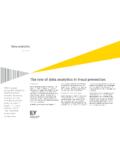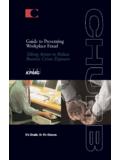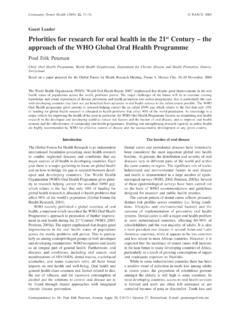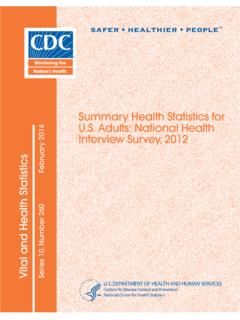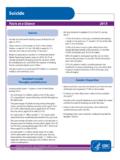Transcription of INVENTORY SHRINKAGE FIGURES STRATEGIES
1 INVENTORY SHRINKAGE FACTS, FIGURES & STRATEGIES This article is intended to provide Ace retailers with useful information and data relating to the typical SHRINKAGE value (dollar-wise and as a percentage of sales) of retailers; the causes of SHRINKAGE ; and certain STRATEGIES that are widely recognized as being necessary to maintain an acceptable SHRINKAGE figure. It is not all-inclusive, as the problem of SHRINKAGE and, more importantly the measures that must be taken to deter and prevent SHRINKAGE , is something that cannot be adequately covered in an article of this size. If you are experiencing excessive SHRINKAGE , either as a known fact or strong suspicion, contact RETAIL LOSS PREVENTION for assistance. FACTS SHRINKAGE , the dreaded S word and the enemy of a healthy bottom line, is a negative aspect of your business that you will never totally eliminate and which you must continually battle to keep under control.
2 If you do not make loss prevention an integral element of both your business plan and day-to-day operations, you will suffer excessive losses. SHRINKAGE is the difference between what your book INVENTORY (IMU) says you should have in stock, and what a physical INVENTORY confirms you do have in stock. INVENTORY SHRINKAGE , as reported and defined in retail publications and reports, is calculated at retail. SHRINKAGE is caused by two things and two things only - theft and error. If you take action to account for a change to your INVENTORY , such as removing an item from stock for store use, or reducing the sell price of an item because of its condition, or donating an item to a charity, it will not show up as SHRINKAGE because you have accounted for it. There are three categories of theft - theft by employees, theft by customers and theft by vendors.
3 Error, on the other hand, is the unintentional loss of INVENTORY value, with no dishonesty involved. Mistakes such as mispricing, entering inaccurate data into the IMU file, or neglecting to adjust the INVENTORY when actions take place such as removing an item from display for store use or donating an item to a local charity, are all examples of SHRINKAGE caused by an error. The National Retail Security Survey (NRSS) is a report produced annually by the Security Research Project, Department of Criminology, Law and Society at the University of Florida. It is this report that is used by retailers and retail loss prevention personnel as the standard for assessing loss prevention experiences and data for the year reported. The most recent report (2008) is based on input from national retail corporations that reported their causes of SHRINKAGE as reflected in this chart.
4 You'll note that over 80% of SHRINKAGE is due to theft. You should also know that all three theft categories can be dramatically reduced through implementation and enforcement of practical and realistic internal controls. As you can see, theft by associates accounts for the largest share of the SHRINKAGE dollar. It is also the most diabolical, personally stressful and difficult for the Ace retailer to acknowledge, as it is committed by persons who you consider to be your extended family and who you have placed trust in to protect your and your business's best interests. When an annual INVENTORY is conducted and a shortage is discovered, there is, unfortunately, no verifiable means of determining exactly what percentage of the loss was caused by theft out the front door by customers; theft out the back door by employees; cash embezzled at the POS terminal by employees; theft by a vendor who has access to your INVENTORY ; or errors resulting from mistakes by employees with no criminal intent.
5 National retail chains with internal loss prevention departments are, however, able to extrapolate and estimate the relative significance of each of these causes using known facts and data associated with employee theft and shoplifting cases, internal audit reports, etc. It is these facts and data that are used in internal annual reports and periodic articles - and provided for use in the National Retail Security Survey. FIGURES The North American Retail Hardware Association reports that the bottom line net profit of the average hardware store owner is of sales. Rounding that number up to 3%, that means that if an item valued at $50 is stolen, additional sales of $1,667 must be generated to compensate for the loss of the item (and, of course, it s still gone). Conversely, if the theft of a $50 item is prevented by the action of an employee, it is the same thing as generating additional sales of $1,667.
6 This chart provides a stark picture of just how much theft and error costs, as well as the true value of a successful loss prevention program. 106 corporate retail chains provided data for the 2008 NRSS, all of which have corporate-mandated policies and procedures and data gathering mechanisms. Three national retailers in the Home Center/Hardware/Lumber/Garden category participated. Ace Hardware is unable to participate since data relating to store level SHRINKAGE , employee theft and shoplifting cases, best practices actually used at store level, etc., is not available. Since the participating corporations have loss prevention departments, as well as policies, procedures and controls that are mandated, continually assessed and enhanced, it is realistic to conclude that their SHRINKAGE numbers are, on average, lower than those experienced by the typical Ace retailer.
7 The national average retail INVENTORY SHRINKAGE across all retail markets, expressed as a percentage of total retail sales, was reported in the NRSS to be A survey of Ace retailers conducted by Retail Loss Prevention a few years ago concluded that the majority could not provide a precise annual SHRINKAGE number (dollar or percent of sales). Those who did compute SHRINKAGE (based on annual inventories and/or cycle counts) confirmed SHRINKAGE numbers ranging from 2 - 6% of sales, with a mean of of sales. The following four tools are deemed essential to creating and maintaining an effective and ongoing SHRINKAGE reduction program: o Proper screening of applicants (criminal history check, credit check, previous employers checks, etc.) prior to hiring. o A clearly stated company policy that theft, in any form, is not tolerated and, when detected, will be prosecuted.
8 O A team approach to employee involvement in all aspects of loss prevention, along with the creation of a culture of honesty among employees. o A practical and enforced system of internal controls that encompasses all aspects of store operations, from store opening/closing procedures, to POS operations, to trash removal, to access controls. STRATEGIES It is essential that the book INVENTORY be as accurate as possible at all times. This file is the heart of your business. There is no more important file in your computer. Access to it and, in particular, the capability to adjust it, should be limited to the fewest associates possible, consistent with operational needs. Senior management review of all INVENTORY (and price) adjustments is essential and should be done on a no less frequent basis than weekly. Use the INVENTORY Transaction Register (ITR) in the Activant Eagle for Windows system to conduct these reviews.
9 Question and follow-up on any entry you do not understand. Ideally, conduct a physical INVENTORY (by SKU), at the end of each fiscal year. Remember that the book INVENTORY at year-end represents the net result of all changes to it throughout the previous twelve months. That includes adjustments made during cycle counts or at any other time when it became apparent that the physical count did not match the count in the IMU. The value of these adjustments (again, ideally by SKU) must be maintained in a file or account throughout the year so that it is available at year-end. The cumulative value (presumably negative) of all such adjustments must be added to the INVENTORY variance calculated from the year-end physical INVENTORY . All values should be at retail. If the INVENTORY is taken at cost or the accounts of adjustments are at cost, convert the cost value to retail by using the average margin for your store ( , $100,000 SHRINKAGE at cost would be $140,000 at retail if your average margin is 40%).
10 Once those two amounts are totaled, you will then have your total SHRINKAGE and be able to calculate your SHRINKAGE as a percent of sales. Once you have that number, you will be in a position to know whether your SHRINKAGE is above or below the national average. Plus, when this is done every year, you will know whether your efforts to control SHRINKAGE are - or are not - working. Further, by keeping SHRINKAGE data by SKU, you will be able to target your loss prevention efforts at those departments, or individual SKUs, that are your significant problems. If an annual physical INVENTORY is not practical, it is essential that programmed cycle counts be conducted. That means developing a schedule in which every SKU in the store is counted at least twice a year. Ideally, cycle counts should not be conducted by the associate responsible for the department being counted.



